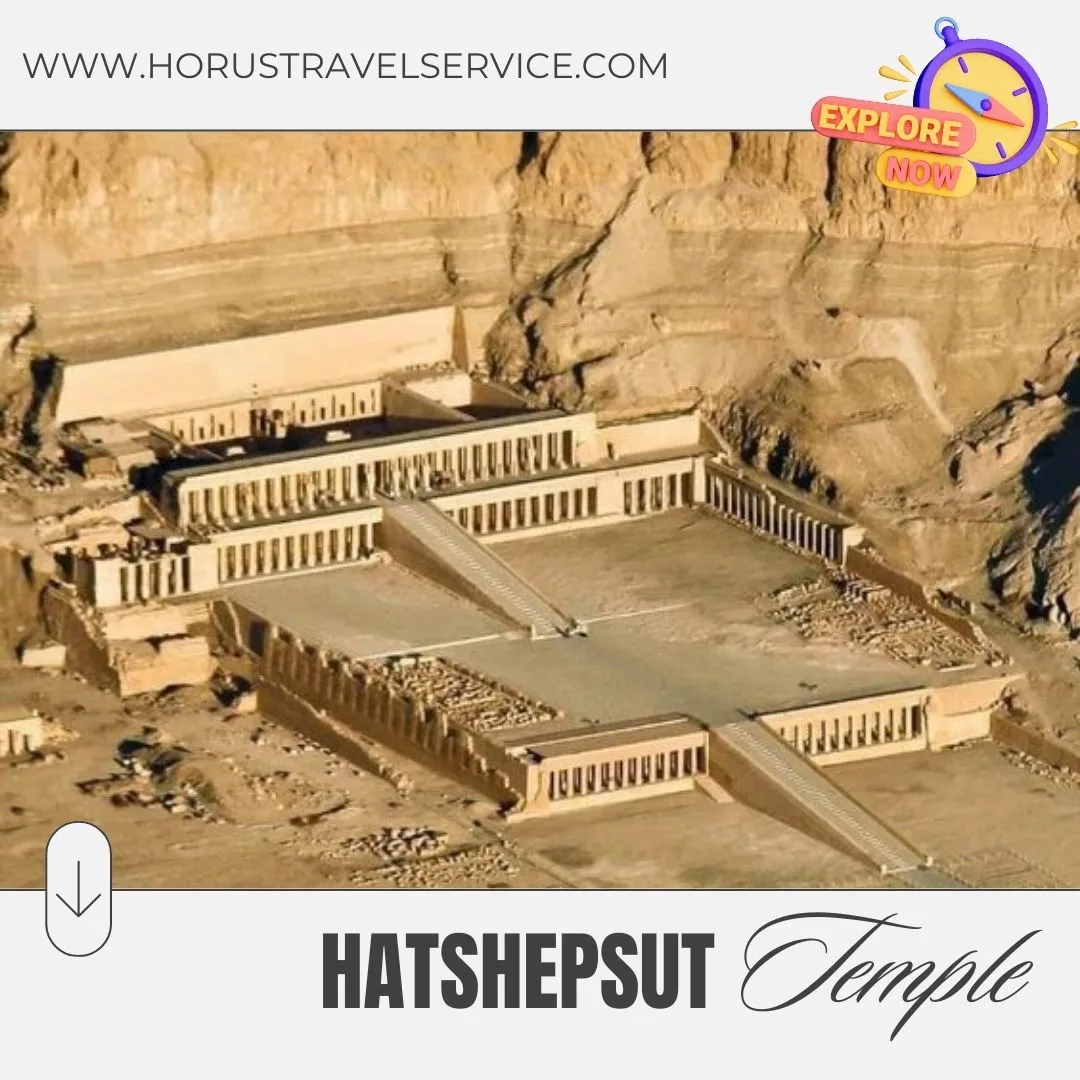


2024-06-25 02:43:24
Hatshepsut Temple' the women who would be a king'
In the very heart of ancient Egypt, circa 1507 BCE, a princess was born into the royal family. Her name was Hatshepsut, and she became the daughter of Pharaoh Thutmose I and his chief wife, Ahmose. This Hatshepsut, since her early years, evinced uncommon strength and acumen—features that characterized her extraordinary reign later.

While Hatshepsut was growing up, her father wisely and powerfully administered the land. She naturally acquired all the finer points of government, religion, and military strategy, which had previously been taught to boys. But Hatshepsut was no ordinary princess. Upon her father's death, one of her half-brothers, Thutmose II, took the throne. Hatshepsut married Thutmose II, her half-brother, and was made his Great Royal Wife in order for them to amass power not diluted by weaker royal blood.
Tragedy struck when Thutmose II died young, and he was succeeded by an infant son, Thutmose III. He was succeeded by Hatshepsut as regent, a position usually held until the young king reached adulthood. But the vision of Hatshepsut for Egypt was way too grand to be confined to some mere regency. In 1479 BCE, she began doing perhaps the boldest act in history: Hatshepsut declared herself Pharaoh and assumed all powers and responsibilities of a kingship.
One of the most stupendous architectural accomplishments of ancient Egypt belongs to the mortuary temple of Hatshepsut, known as Djeser-Djeseru, or "Holy of Holies," directly located at Deir el-Bahri near the Valley of the Kings. The temple has been considered a marvelous tribute to her reign and legacy by Hatshepsut's royal architect Senenmut.
It is built directly fronting the face of the cliff. There are three successive levels of temple buildings that are crossed by sufficiently long ramps and are Supported by a colonnade of fine columns on each of their fronts to bring harmony, symmetry, and integration into nature.
What strikes one immediately in this temple's design is how well it fits within the surrounding natural environment. The building just seems to flow organically out of the limestone cliffs that rise directly behind it, an effect that is as pleasing aesthetically as representative of the human and natural worlds' joining in wedlock.
Every degree of the temple has open courtyards having porticoes lined by colonnades. These are adorned with reliefs and inscriptions that depict all the events of Hatshepsut's reign, starting from her divine birth and coronation to her famous expedition to Punt.
At the back of the temple, one finds a shrine dedicated to the god Amun, cut directly into the mountain. This inner shrine was the holiest part of the temple; it was used for religious rites and ceremonies.
The walls are covered with works showing detailed reliefs and inscriptions. These give information on the political and religious life of ancient Egypt and the great achievements by Hatshepsut. Some of the major scenes include the divine birth of Hatshepsut, her coronation, and the expedition to Punt returning with a lot of wealth and exotic products back into Egypt.
One of the major themes seen within the reliefs of the temple is the divine birth of Hatshepsut herself. For this case, scenes usually include the god Amun making love to her mother, Queen Ahmose, so as to legitimize Hatshepsut's rule in that she was divinely ordained.
Another series of significant reliefs include those representing an expedition that she sent to the fabled Land of Punt, an important trading mission to exploit the area for myrrh, incense, gold, and many other exotic animals for Egypt. Indeed, it was one of the high spots of Hatshepsut's reign.
After Hatshepsut's death, her successor Thutmose III tried to strike her name from history by defacing her images and inscriptions all over Egypt—including in her mortuary temple. Yet so much of the temple's artwork escaped damage that modern archaeologists have been able to piece together her story.
Extensive restorations have been made to the temple during the 20th and 21st centuries to preserve this structure and its decorative elements,408 thereby allowing it to be ranked as one of the most visited and studied archaeological sites in modern-day Egypt.
Legacy
More than anything else, the mortuary temple of Hatshepsut testifies to the power of her reign and to her architectural imagination. Viewed not as a place of worship or monument to that queenly career, but, uniquely at Thebes, as an enduring expression of her new approach to kingship, it is sited. It is this union of natural beauty with architectural grandeur that, through its remains today, made its mark on historians, archaeologists, and visitors worldwide.
And if Egypt is ringing in your mind now, you can explore the breathtaking beauty of timeless beauty, ancient mysteries under the safekeeping leadership of Horus Travel Service.
Book your ideal tour now!

Newsletter
Sign up to receive the best offers


.jpg)
 copy.jpg)
.jpg)
 copy.jpg)